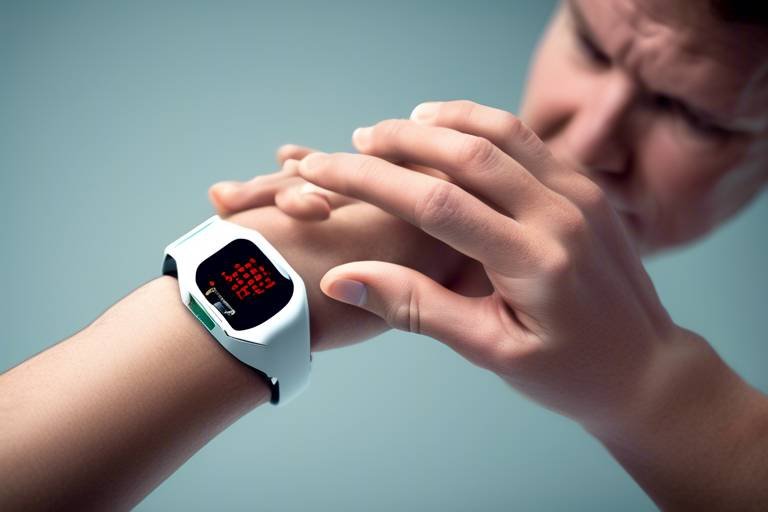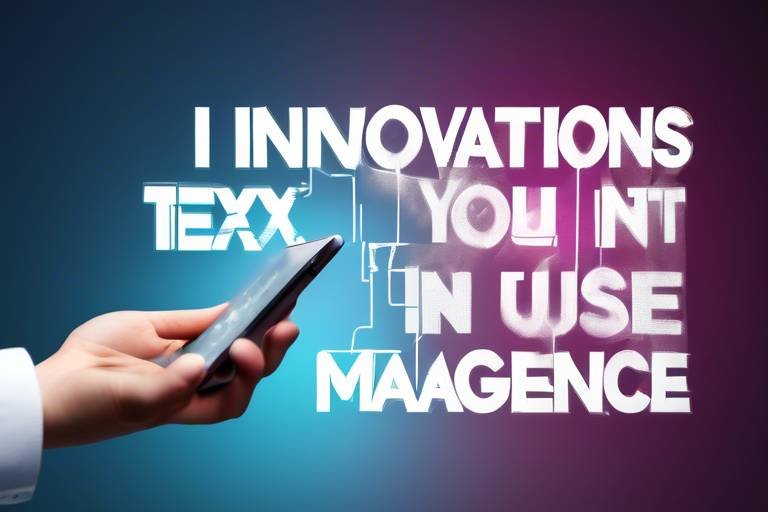The Role of Smart Homes in Energy Conservation
In today's fast-paced world, where environmental concerns loom larger than ever, the concept of smart homes has emerged as a beacon of hope for energy conservation. Imagine a home that not only understands your needs but also actively contributes to reducing your carbon footprint. Smart home technology offers innovative solutions that empower homeowners to manage their energy consumption effectively. By leveraging advanced devices and systems, we can create a living environment that is not only comfortable but also sustainable.
At the heart of this revolution lies the integration of various smart technologies, each designed to enhance energy efficiency. From smart thermostats that learn your habits to intelligent lighting systems that adjust based on natural light, these innovations work in harmony to minimize waste. The result? A significant reduction in energy bills and a positive impact on our planet. In this article, we'll explore how smart homes are transforming the way we consume energy, making it easier than ever to embrace a sustainable lifestyle.
Smart home technology encompasses a wide range of devices and systems that enable homeowners to control their environment with ease. Think of it as having a personal assistant for your home, one that manages everything from heating and cooling to lighting and security. This interconnected ecosystem not only enhances comfort but also promotes energy management and conservation.
With the rise of the Internet of Things (IoT), smart homes have become more accessible than ever. Homeowners can now monitor and control their energy usage through smartphone apps, voice commands, or automated systems. This level of control allows for real-time adjustments, ensuring that energy is used efficiently and effectively. By understanding how these technologies work, we can harness their potential to create a greener future.
Energy-efficient appliances are the backbone of any smart home, designed to minimize energy consumption while delivering top-notch performance. These devices use cutting-edge technology to reduce waste without compromising on convenience or comfort. For instance, a smart refrigerator can optimize its cooling cycles based on usage patterns, while a washing machine can adjust its water and energy use depending on the load size.
One of the standout features of smart homes is the implementation of smart thermostats. These devices allow users to optimize their heating and cooling schedules, significantly reducing energy waste. By learning your temperature preferences and daily routines, smart thermostats can adjust settings automatically, ensuring that your home is always at the perfect temperature when you need it.
Many smart thermostats come equipped with adaptive learning features. This means they can analyze your habits over time and adjust settings accordingly. For example, if you typically leave for work at 8 AM, the thermostat will learn this pattern and lower the heating or cooling when you’re not home, ensuring optimal energy use without sacrificing comfort.
Imagine being able to control your home’s temperature from anywhere in the world! With remote access features, homeowners can monitor and adjust their heating and cooling systems via smartphone apps. This flexibility not only enhances comfort but also leads to further energy savings, as you can ensure your systems are not running unnecessarily when you’re away.
Another critical component of energy conservation in smart homes is the use of smart lighting solutions. These systems can automatically adjust brightness and color based on occupancy and natural light availability. For instance, when you enter a room, the lights can turn on automatically, and when you leave, they can turn off, ensuring that energy is not wasted.
Home energy management systems (HEMS) integrate various smart devices to provide real-time energy consumption data. This centralized control allows homeowners to make informed decisions about their energy use. By understanding where energy is being consumed, you can identify areas for improvement and take action to reduce waste.
Real-time monitoring is a game-changer in energy conservation. It helps users identify energy-hungry devices in their homes and adjust their usage patterns accordingly. For example, if you notice that your air conditioning unit is using significantly more energy than expected, you can take steps to address the issue, whether that means scheduling maintenance or adjusting your usage habits.
Automated energy reports are another valuable feature of HEMS. These reports provide insights into your consumption trends, empowering homeowners to implement changes that lead to increased efficiency and reduced energy costs. By regularly reviewing these reports, you can stay on top of your energy usage and make adjustments as needed.
Smart homes can seamlessly integrate renewable energy sources, such as solar panels, enhancing energy independence and contributing to a sustainable energy future. This integration not only reduces reliance on fossil fuels but also allows homeowners to take advantage of green energy solutions.
Solar energy management systems optimize the use of solar power, ensuring that homeowners maximize their investment in renewable energy technology. By intelligently managing when and how solar energy is used, these systems can significantly reduce overall energy costs and environmental impact.
Battery storage solutions are another exciting development in smart home technology. These systems allow homeowners to store excess energy generated from renewable sources, enabling them to use it during peak demand periods. This capability not only enhances energy conservation but also provides a buffer against fluctuating energy prices.
- What is a smart home? A smart home is a residence equipped with devices that can be controlled remotely, often through a smartphone app, to enhance convenience and energy efficiency.
- How do smart thermostats save energy? Smart thermostats learn your heating and cooling preferences and adjust settings automatically to reduce energy waste.
- Can I integrate solar panels into my smart home? Yes, many smart home systems can integrate with solar panels to optimize energy use and reduce reliance on the grid.
- What are home energy management systems? HEMS are systems that provide real-time data on energy consumption, allowing homeowners to monitor and manage their energy use effectively.

Understanding Smart Home Technology
Smart home technology is revolutionizing the way we interact with our living spaces. Imagine being able to control your lights, thermostat, and even your security system from the palm of your hand—it's like having a personal assistant dedicated to making your home more efficient and comfortable. At its core, smart home technology encompasses a variety of devices and systems that communicate with each other and can be managed remotely. This interconnectedness allows homeowners to optimize their environments, leading to improved energy management and conservation.
One of the most exciting aspects of smart home technology is its ability to learn and adapt. For instance, smart devices can analyze your daily routines and adjust their operations accordingly. Picture this: your smart thermostat learns when you typically leave for work and adjusts the temperature to save energy while you're away. This kind of intelligent automation not only enhances convenience but also significantly reduces energy waste, making it a win-win for both homeowners and the environment.
Moreover, the integration of smart home devices creates a cohesive ecosystem that enhances energy efficiency. Devices can communicate with each other to optimize energy usage. For example, smart lighting can work in conjunction with smart blinds to adjust the brightness of your home based on the amount of natural light available, ensuring you’re not wasting electricity when it’s unnecessary. This level of synergy is what makes smart homes so appealing for those looking to conserve energy.
To illustrate the potential of smart home technology, consider the following table that outlines some common smart devices and their functions:
| Device | Function | Energy Savings |
|---|---|---|
| Smart Thermostat | Optimizes heating and cooling schedules | Up to 15% on heating and cooling bills |
| Smart Lighting | Adjusts brightness based on occupancy | Up to 30% reduction in lighting energy use |
| Smart Plugs | Monitors and controls power to devices | Variable savings based on usage patterns |
As you can see, smart home technology is not just a trend; it’s a fundamental shift in how we manage our energy consumption. With the ability to monitor and control devices remotely through smartphones or voice-activated assistants, homeowners can make informed decisions that directly impact their energy usage. This level of control empowers individuals to take charge of their energy habits and contribute to a more sustainable future.
In conclusion, understanding smart home technology is essential for anyone looking to embrace energy conservation. The combination of intelligent devices, user-friendly interfaces, and the ability to integrate with renewable energy sources positions smart homes as a pivotal player in the quest for sustainability. By adopting these technologies, we are not just enhancing our comfort; we are also making a conscious effort to reduce our carbon footprint and protect the environment for future generations.

Energy-Efficient Appliances
In today's eco-conscious world, have become a cornerstone of smart home technology. These devices not only help in minimizing energy consumption but also promote a lifestyle that aligns with sustainability. Imagine walking into your home and knowing that every appliance is working in harmony with your energy goals—sounds like a dream, right? Well, thanks to advancements in technology, this dream is now a reality.
Energy-efficient appliances are designed to use less electricity while delivering the same level of performance that you expect. From refrigerators to washing machines, these devices are equipped with innovative features that allow homeowners to save on their utility bills without sacrificing comfort or convenience. For instance, many modern refrigerators come with smart cooling technology that adjusts temperatures based on the contents inside. This means less energy is wasted, and your food stays fresher for longer.
One of the most notable innovations in this realm is the introduction of smart appliances that can communicate with each other. For example, your washing machine can alert your dryer when it's finished, allowing for a seamless transition between cycles. This not only saves time but also energy, as the dryer can optimize its settings based on the load it receives. The ability to monitor and control these devices remotely through smartphone apps adds another layer of convenience, allowing you to manage your energy use even when you're not at home.
Moreover, energy-efficient appliances often carry the Energy Star label, which signifies that they meet strict energy efficiency guidelines set by the U.S. Environmental Protection Agency. By choosing appliances with this label, homeowners can rest assured that they are making a positive impact on the environment while also enjoying lower energy costs. Here's a quick look at some common energy-efficient appliances:
| Appliance Type | Energy Efficiency Features |
|---|---|
| Refrigerators | Smart cooling technology, LED lighting |
| Washing Machines | Load sensing technology, water-efficient cycles |
| Dishwashers | Soil sensors, energy-saving modes |
| Ovens | Convection cooking, smart temperature control |
In addition to saving energy, these appliances contribute to a more sustainable lifestyle. When we reduce our energy consumption, we also decrease our carbon footprint, which is essential in combating climate change. It's a win-win situation: you save money, and the planet benefits too!
So, the next time you're in the market for a new appliance, consider investing in energy-efficient options. Not only will you be making a smart financial decision, but you'll also be playing a part in promoting a more sustainable future. After all, every little bit counts when it comes to conserving energy!
- What are energy-efficient appliances? Energy-efficient appliances are designed to use less energy while providing the same level of performance as standard appliances.
- How do I know if an appliance is energy-efficient? Look for the Energy Star label, which indicates that the appliance meets strict energy efficiency guidelines.
- Can smart appliances really save me money? Yes, by optimizing energy use and reducing consumption, smart appliances can significantly lower your utility bills.
- What types of appliances are typically energy-efficient? Common energy-efficient appliances include refrigerators, washing machines, dishwashers, and ovens.
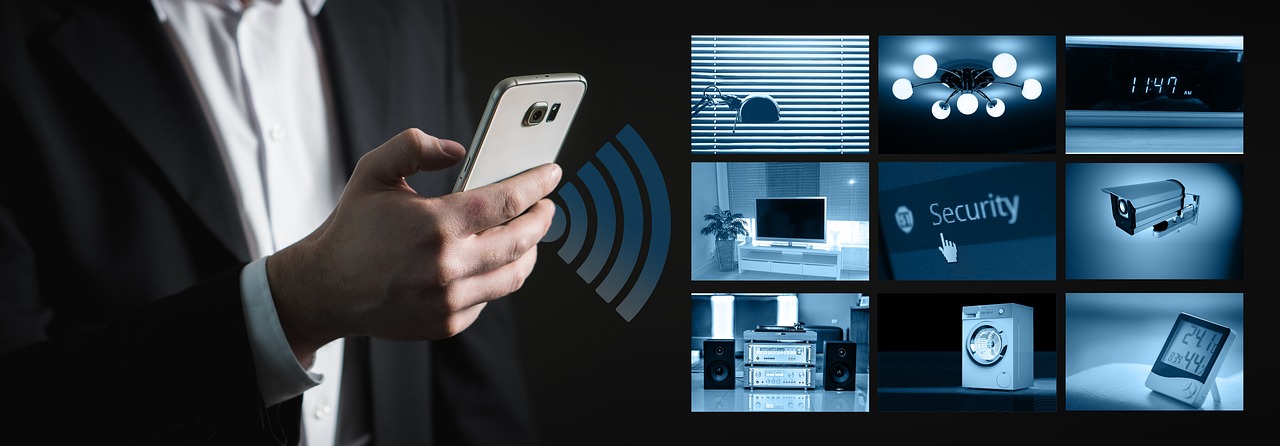
Smart Thermostats
Smart thermostats are revolutionizing the way we manage our home's heating and cooling systems. Imagine being able to control your home's temperature from anywhere, whether you're lounging on the couch or halfway across the world. These innovative devices not only provide convenience but also play a pivotal role in energy conservation. By optimizing heating and cooling schedules, smart thermostats help reduce energy waste, which can lead to significant savings on your utility bills. With the ability to learn your habits, they adjust settings automatically, ensuring that your home is always at the perfect temperature without unnecessary energy consumption.
One of the standout features of smart thermostats is their adaptive learning capabilities. This means that over time, the thermostat learns your daily routines and preferences. For instance, if you typically leave for work at 8 AM, the thermostat will begin to adjust the temperature accordingly, ensuring that your home is comfortable when you arrive back in the evening. This personalized approach not only enhances comfort but also minimizes energy use during times when the house is empty.
In addition to adaptive learning, smart thermostats come equipped with remote access controls. This feature allows you to monitor and adjust your home's temperature from your smartphone or tablet, no matter where you are. Picture this: you’re on vacation and suddenly remember that you left the heating on. With just a few taps on your phone, you can turn it down, saving energy and reducing costs. This level of control empowers homeowners to make smarter decisions about their energy use, leading to more sustainable living practices.
To illustrate the impact of smart thermostats, consider the following table that compares traditional thermostats with smart thermostats:
| Feature | Traditional Thermostats | Smart Thermostats |
|---|---|---|
| Temperature Control | Manual adjustment | Remote and automated adjustment |
| Energy Monitoring | None | Real-time energy consumption data |
| Learning Capabilities | No | Yes, adapts to user habits |
| Cost Savings | Minimal | Significant, with potential for up to 30% savings |
As you can see, the differences are stark. Smart thermostats not only offer advanced features but also promote a more energy-efficient lifestyle. By investing in one of these devices, you're not just upgrading your home; you're making a commitment to sustainability. In a world where energy conservation is becoming increasingly important, smart thermostats stand out as a key player in the quest for a greener future.
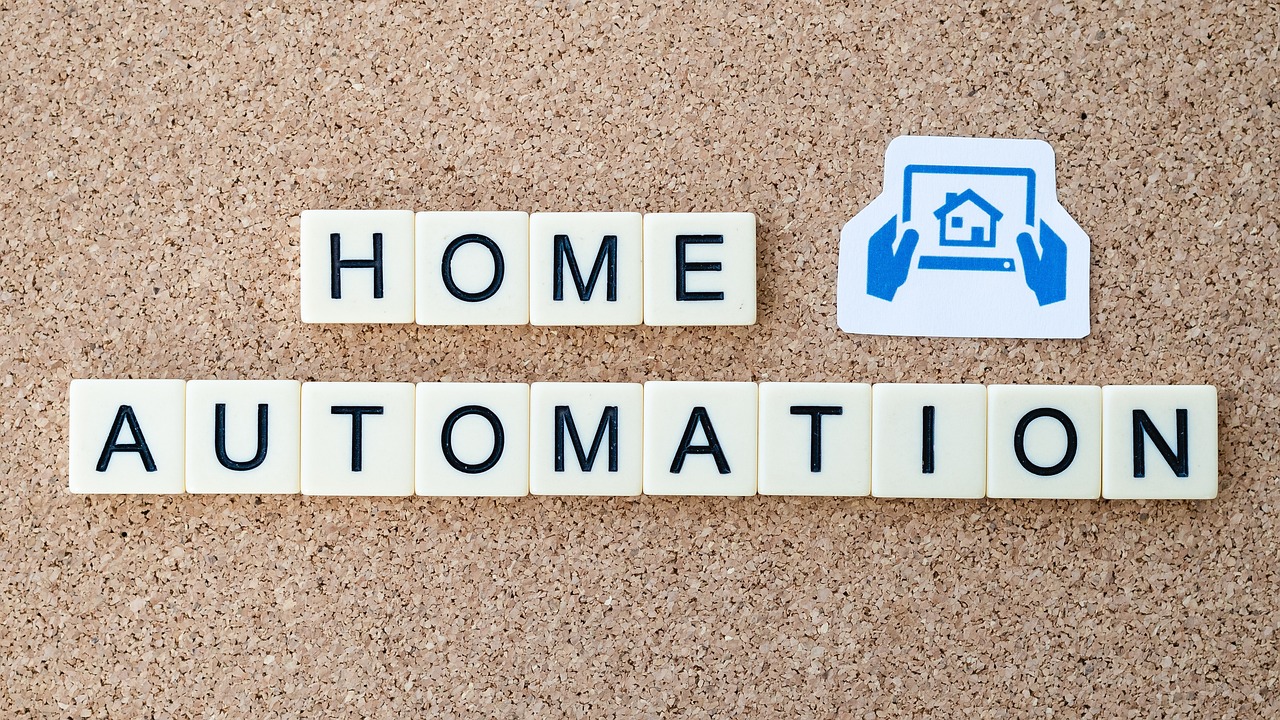
Adaptive Learning Features
One of the most fascinating aspects of modern smart thermostats is their . Imagine having a device that doesn’t just follow your commands but actually learns from your daily routines, almost like having a personal assistant dedicated to your home's comfort and efficiency. These intelligent systems analyze your behavior over time, adjusting their settings to optimize energy use without compromising on comfort. For instance, if you consistently lower the temperature when you leave for work at 8 AM and raise it again when you return at 6 PM, the thermostat will learn this pattern and begin to automate these adjustments for you. This means less manual input and a seamless transition to energy-saving modes.
The beauty of adaptive learning lies in its ability to personalize your home environment. By recognizing patterns in your heating and cooling preferences, these smart devices can make educated guesses about your needs. This not only enhances comfort but also leads to significant energy savings. For example, studies have shown that homes equipped with adaptive learning thermostats can reduce energy consumption by up to 30% compared to traditional systems. This is a game changer for anyone looking to minimize their carbon footprint while enjoying a cozy living space.
Furthermore, adaptive learning features often come with intuitive interfaces that allow homeowners to easily monitor and modify settings. You can track how much energy you’re saving and even receive suggestions for further improvements. It’s like having a coach for your energy usage, guiding you towards more sustainable habits. This capability is particularly beneficial for families with varying schedules, as the thermostat can adjust automatically based on who is home and when.
In the grand scheme of energy conservation, integrating adaptive learning features into your home not only helps you save money but also contributes to a larger movement towards sustainability. As more homeowners adopt these technologies, we can collectively reduce energy demand, lessen the strain on our power grids, and move towards a greener future.
To sum it up, the of smart thermostats are not just a luxury but a necessity in the quest for energy efficiency. They represent a shift in how we interact with our homes, turning them into intelligent ecosystems that respond to our needs while promoting a more sustainable lifestyle.
- What are adaptive learning features in smart thermostats?
Adaptive learning features allow smart thermostats to learn your heating and cooling preferences over time, automating adjustments to optimize energy use.
- How much energy can I save with a smart thermostat?
Many users report energy savings of up to 30% by using smart thermostats with adaptive learning capabilities.
- Can I control my smart thermostat remotely?
Yes, most smart thermostats come with remote access features, allowing you to monitor and adjust settings from anywhere via a smartphone app.
- Are adaptive learning thermostats difficult to install?
No, most smart thermostats are designed for easy installation, and many come with step-by-step guides or video tutorials.
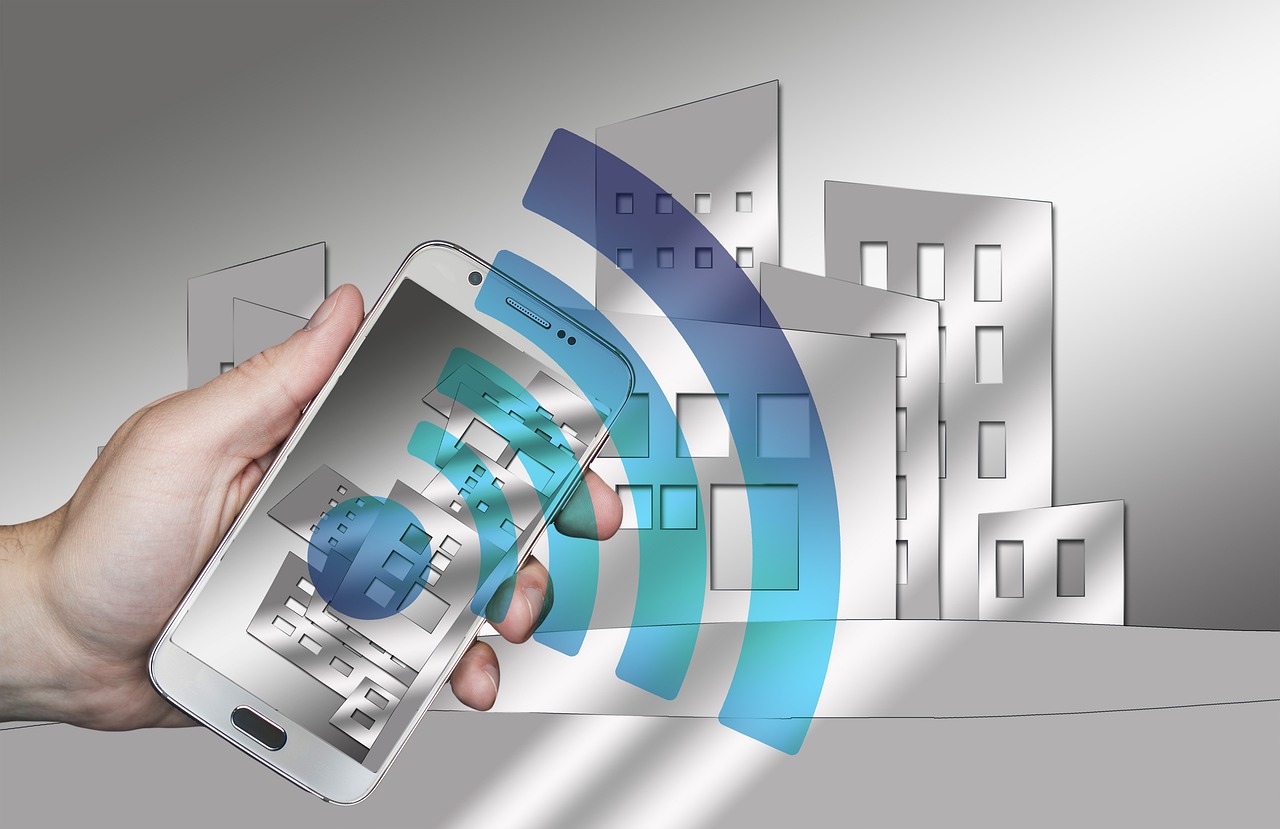
Remote Access Controls
Imagine being able to control your home's temperature while lounging on a beach miles away or adjusting the lights in your living room from your office desk. This is the power of in smart home technology. These features not only provide unparalleled convenience but also play a significant role in energy conservation. With remote access, homeowners can monitor and manage their heating and cooling systems in real time, ensuring that no energy is wasted when they are not at home.
One of the most significant advantages of remote access controls is the ability to adjust settings based on your daily routine. For instance, if you forget to turn off the air conditioning before heading out for the day, you can easily do it from your smartphone. This flexibility helps prevent unnecessary energy consumption, allowing you to save money on your utility bills while contributing to a more sustainable lifestyle.
Moreover, many smart thermostats and lighting systems come equipped with user-friendly apps that provide instant notifications and alerts. For example, if the temperature in your home drops unexpectedly, you’ll receive a notification on your device, enabling you to take immediate action. This feature ensures that your home remains at a comfortable temperature without overusing energy, especially during extreme weather conditions.
To illustrate the impact of remote access controls on energy conservation, consider the following table that highlights the potential savings:
| Feature | Energy Savings | Convenience |
|---|---|---|
| Remote Temperature Adjustment | Up to 30% savings on heating/cooling costs | Adjust from anywhere |
| Smart Scheduling | Reduces energy use during peak hours | Set it and forget it |
| Real-Time Alerts | Prevents energy waste due to system malfunctions | Immediate notifications |
In addition to saving energy, remote access controls also enhance the overall user experience. With a few taps on your smartphone, you can create a cozy atmosphere for when you arrive home, ensuring that your living space is not only energy-efficient but also welcoming. You can even set up automated routines that adjust your home’s settings based on your preferences and lifestyle. For example, you might program your lights to dim and your thermostat to cool down just before you arrive home from work, making your transition from the outside world to your sanctuary as seamless as possible.
Ultimately, remote access controls are more than just a trendy feature; they are a vital component of modern smart homes that significantly contribute to energy conservation. By allowing homeowners to manage their energy consumption actively, these controls empower individuals to make informed decisions that align with their sustainability goals. So, the next time you think about investing in smart home technology, remember that remote access controls are not just about convenience—they're about creating a more energy-efficient and eco-friendly home.
- What are remote access controls? Remote access controls allow homeowners to manage their smart devices, such as thermostats and lights, from anywhere using a smartphone or tablet.
- How do remote access controls help save energy? They enable users to monitor and adjust settings in real time, preventing energy waste when the home is unoccupied.
- Can I control my smart home devices when I’m away? Yes, as long as you have internet access, you can control your devices from anywhere in the world.
- Are remote access controls complicated to use? Most smart home apps are designed to be user-friendly, making it easy for anyone to navigate and control their devices.

Smart Lighting Solutions
Imagine walking into your home and having the lights automatically adjust to a warm glow, perfectly complementing the time of day and your mood. have revolutionized the way we illuminate our living spaces, providing not just convenience but also significant energy savings. These systems utilize advanced technology to automatically adjust brightness and color based on occupancy and the amount of natural light available, ensuring that you are never wasting energy on unnecessary lighting.
One of the most exciting features of smart lighting is its ability to learn your habits. For instance, if you typically dim the lights in the evening, your smart lighting system can recognize this pattern and adjust itself accordingly without you having to lift a finger. This kind of automation not only enhances your comfort but also contributes to energy conservation. In fact, studies have shown that homes equipped with smart lighting can reduce energy consumption by up to 30%!
In addition to their adaptability, smart lighting solutions can be controlled remotely through your smartphone or voice-activated devices. This means you can turn off lights left on in another room while you’re lying in bed or adjust the brightness of your living room lights from the comfort of your couch. The convenience of remote access not only saves energy but also increases the overall efficiency of your home.
Moreover, many smart lighting systems are compatible with other smart home devices, allowing for seamless integration. For example, when you leave home, your security system can signal the lights to turn off, ensuring you never waste energy while also enhancing your home’s security. This interconnectedness is a game-changer in energy management, as it allows for a holistic approach to home automation.
To give you a clearer picture of how smart lighting can benefit your home, consider the following:
| Feature | Benefit |
|---|---|
| Adaptive Brightness | Automatically adjusts based on natural light levels. |
| Remote Control | Manage your lights from anywhere using a smartphone. |
| Energy Reports | Track energy consumption and identify savings opportunities. |
| Integration with Other Devices | Works with other smart home systems for enhanced efficiency. |
In conclusion, not only provide unparalleled convenience but also play a vital role in energy conservation. By adapting to your lifestyle, integrating with other smart devices, and offering remote control capabilities, these systems are paving the way for a more sustainable and efficient future in home energy management. So, why not illuminate your life intelligently and contribute to a greener planet?
- What are smart lighting solutions? Smart lighting solutions are advanced lighting systems that can be controlled remotely and adapt automatically based on user habits and environmental conditions.
- How do smart lights save energy? They save energy by adjusting brightness based on natural light levels and occupancy, ensuring that lights are only on when needed.
- Can smart lighting systems integrate with other smart home devices? Yes, most smart lighting systems can be integrated with other devices, such as thermostats and security systems, for enhanced energy management.
- Do I need a special hub for smart lighting? Some smart lighting systems require a hub for connectivity, while others can connect directly to your Wi-Fi network.

Home Energy Management Systems
Home Energy Management Systems (HEMS) are revolutionizing the way we interact with energy consumption in our homes. Imagine being able to take control of your energy use with just a few taps on your smartphone. It's like having a personal energy assistant at your fingertips! These systems integrate various smart devices, allowing homeowners to monitor and manage their energy consumption in real-time. By providing detailed insights into how energy is being used, HEMS empower users to make informed decisions that can lead to significant savings on their utility bills.
One of the standout features of HEMS is their ability to provide real-time monitoring. This means that homeowners can see exactly how much energy each device is using at any given moment. For example, you might discover that your old refrigerator is guzzling more energy than you thought, prompting you to consider an upgrade. With this knowledge, you can adjust your usage patterns, like turning off devices when they’re not in use or scheduling high-energy tasks for off-peak hours. The result? A more efficient home that not only saves money but also reduces its carbon footprint.
Moreover, HEMS often come equipped with automated energy reports. These reports provide valuable insights into your energy consumption trends over time. Think of it as a report card for your home’s energy use! By analyzing these reports, homeowners can identify patterns and make strategic changes to enhance efficiency. For instance, if you notice that energy usage spikes during certain times of the day, you can take steps to mitigate this, such as adjusting your thermostat or using energy-efficient appliances during off-peak hours.
To illustrate the impact of HEMS, consider the following table, which outlines potential savings based on different energy management strategies:
| Strategy | Potential Savings |
|---|---|
| Upgrading to energy-efficient appliances | Up to 30% on energy bills |
| Utilizing smart thermostats | 20-25% savings on heating and cooling costs |
| Implementing real-time monitoring | 10-15% reduction in overall energy consumption |
In conclusion, Home Energy Management Systems are not just a luxury; they are becoming essential tools for anyone looking to live a more sustainable lifestyle. With their ability to provide real-time data, automate energy reports, and help integrate renewable energy sources, HEMS are paving the way for a future where energy conservation is both accessible and achievable. So, are you ready to take control of your home’s energy use and contribute to a greener planet?
- What is a Home Energy Management System? A HEMS is a technology that allows homeowners to monitor and manage their energy consumption in real-time, often through a smartphone app.
- How can a HEMS save me money? By providing insights into your energy use, a HEMS can help you identify ways to reduce consumption, leading to lower utility bills.
- Can I integrate renewable energy sources with a HEMS? Yes! Many HEMS are designed to work seamlessly with solar panels and other renewable energy systems.

Real-Time Monitoring
Imagine having the power to see exactly how much energy your home is consuming at any given moment. is like having a personal energy coach right in your living room, guiding you towards smarter energy choices. With smart home technology, homeowners can access detailed insights into their energy usage through intuitive applications on their smartphones or tablets. This level of transparency is not just enlightening; it’s transformative. By understanding where energy is being consumed, users can pinpoint energy-hungry devices that may be draining their wallets.
For instance, consider a scenario where your smart home system alerts you that your heating system is using significantly more energy than usual. This could indicate a malfunction or inefficiency that needs addressing. Instead of waiting for the utility bill to arrive, you can take action immediately, potentially saving yourself from high costs and unnecessary waste. Furthermore, real-time data can help identify patterns in your energy consumption, allowing you to adjust usage habits accordingly.
But how does this real-time monitoring work? It typically involves a combination of smart meters and home energy management systems (HEMS) that communicate seamlessly with your smart devices. These systems provide a comprehensive view of your energy consumption, often broken down into categories such as:
| Device Type | Average Consumption (kWh) | Cost per Month ($) |
|---|---|---|
| Heating System | 750 | 75 |
| Cooling System | 600 | 60 |
| Refrigerator | 150 | 15 |
| Lighting | 300 | 30 |
This table illustrates how different devices contribute to your overall energy consumption and costs. By utilizing real-time monitoring, homeowners can make informed decisions, such as upgrading to more energy-efficient appliances or reducing usage during peak hours. It’s like being handed the keys to your energy kingdom, where you can reign over costs and consumption.
Moreover, the benefits of real-time monitoring extend beyond just saving money. It can also lead to a more sustainable lifestyle. When you become aware of how much energy you consume, it often motivates you to adopt more eco-friendly practices. You might find yourself turning off lights when you leave a room or unplugging devices that draw power even when they’re not in use. This kind of behavioral change is crucial in the fight against energy waste and climate change.
In conclusion, real-time monitoring is a game-changer for homeowners looking to conserve energy and reduce costs. It empowers users with the information they need to make proactive decisions, ultimately leading to a more sustainable and efficient home. So, why not embrace this technology and take control of your energy consumption today?
- What is real-time monitoring in smart homes? Real-time monitoring refers to the ability to track and analyze energy consumption as it happens, providing homeowners with immediate insights into their usage patterns.
- How can I access real-time monitoring data? You can access this data through smartphone apps or web interfaces provided by your home energy management system.
- Does real-time monitoring really save money? Yes, by identifying energy-hungry devices and adjusting usage patterns, homeowners can significantly reduce their energy bills.
- Can I integrate real-time monitoring with renewable energy sources? Absolutely! Many real-time monitoring systems work seamlessly with solar panels and battery storage solutions to optimize energy use.

Automated Energy Reports
Automated energy reports are a game-changer for homeowners looking to optimize their energy consumption and cut down on costs. Imagine receiving a detailed breakdown of your energy usage without lifting a finger! These reports provide insights into how much energy you’re using, when you’re using it, and which appliances are the biggest culprits in your energy bills. This information is not just enlightening; it’s empowering. It allows you to make informed decisions that can lead to significant savings over time.
For instance, if your automated report reveals that your air conditioning unit is running excessively during peak hours, you can adjust your usage patterns or upgrade to a more efficient model. The beauty of these reports lies in their ability to highlight trends and patterns in your energy consumption. By analyzing this data, you can identify specific times when your energy use spikes, which can help you strategize on how to reduce it.
Moreover, these reports can often be customized to fit your preferences. Some systems allow you to set alerts or notifications when your energy usage exceeds a certain threshold, giving you the chance to react before the bill arrives. This proactive approach to energy management not only saves you money but also contributes to a more sustainable lifestyle.
To illustrate the impact of automated energy reports, consider the following table, which outlines potential savings based on different usage adjustments:
| Usage Adjustment | Estimated Monthly Savings |
|---|---|
| Reducing peak hour usage by 10% | $30 |
| Switching to energy-efficient appliances | $25 |
| Setting thermostat 2 degrees higher in summer | $15 |
| Using smart lighting solutions | $20 |
In conclusion, automated energy reports serve as a vital tool in the quest for energy efficiency. By providing actionable insights and fostering awareness, they help homeowners take control of their energy consumption, leading to both financial savings and a reduced carbon footprint. So, if you haven’t yet embraced this technology, now is the perfect time to start reaping the benefits!
- What are automated energy reports? Automated energy reports are detailed analyses of your energy usage, generated by smart home systems to help you understand and optimize your consumption.
- How can I access my automated energy reports? Most smart home energy management systems provide access to these reports through a mobile app or web portal.
- Can I customize my energy reports? Yes, many systems allow for customization based on your preferences, including frequency and types of insights provided.
- Will automated energy reports really save me money? Absolutely! By identifying usage patterns and suggesting adjustments, these reports can lead to significant savings on your energy bills.
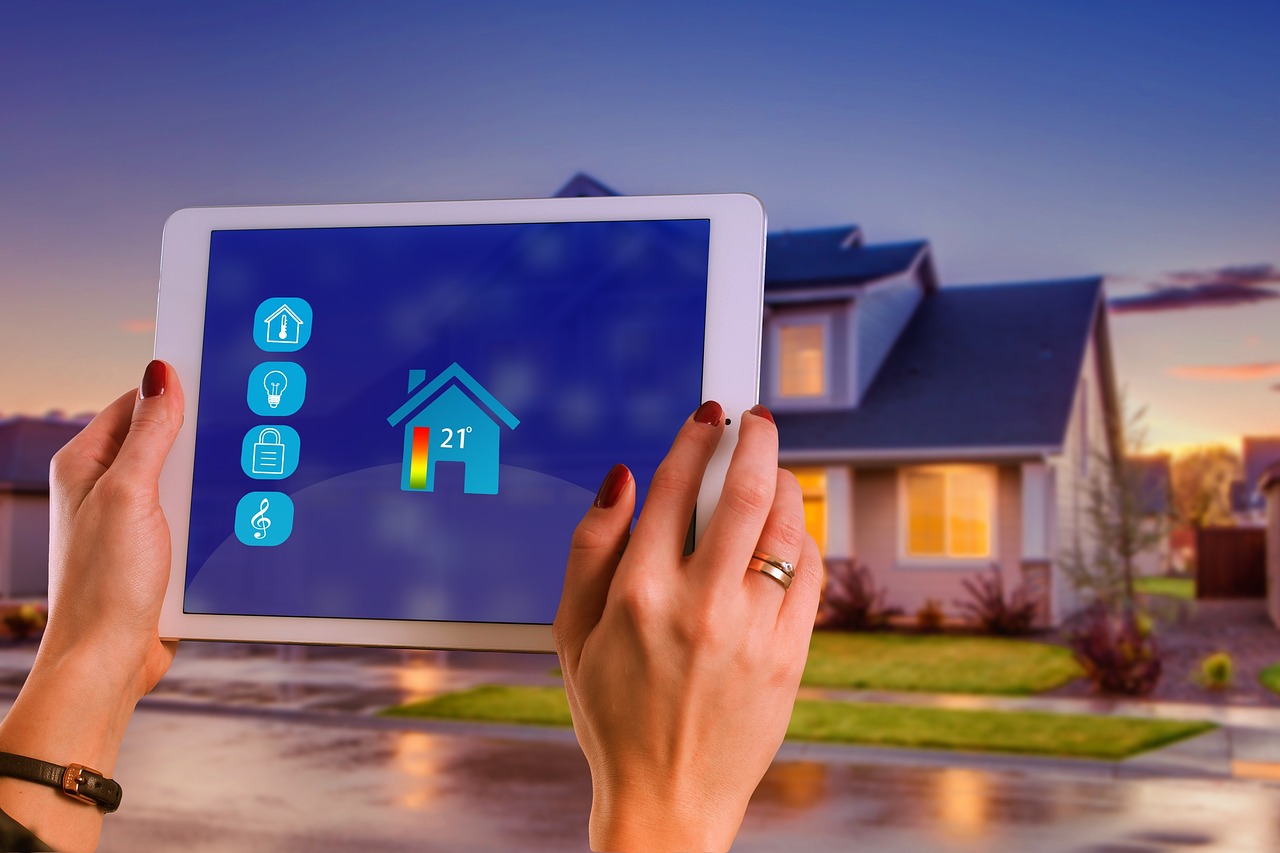
Integration with Renewable Energy Sources
In today's world, where environmental concerns are at the forefront, the integration of renewable energy sources into smart homes is not just a trend; it's a necessity. Imagine a home that not only reduces its carbon footprint but also generates its own energy. This is where smart home technology shines, allowing homeowners to harness the power of the sun, wind, and other renewable sources. By incorporating these technologies, homeowners can achieve a level of energy independence that was previously unimaginable.
One of the most popular renewable energy sources for smart homes is solar energy. Solar panels can be installed on rooftops to capture sunlight and convert it into electricity. This electricity can power everything from lights to appliances, significantly reducing reliance on traditional energy grids. But that's just the beginning. Smart homes equipped with solar energy management systems can optimize energy use, ensuring that the electricity generated is used efficiently. This means that homeowners can enjoy lower energy bills while contributing to a more sustainable future.
Additionally, many smart homes are now integrating battery storage solutions. These systems store excess energy generated during sunny days for use during peak demand periods or cloudy days. Think of it as your home's energy bank, allowing you to draw on your stored energy when needed. This not only enhances energy conservation but also provides peace of mind, knowing that you have a backup power source in case of outages.
To illustrate the benefits of integrating renewable energy sources into smart homes, consider the following table:
| Feature | Benefits |
|---|---|
| Solar Panels | Reduce electricity bills, lower carbon footprint, generate clean energy |
| Battery Storage | Store excess energy, ensure power availability during outages, optimize energy use |
| Smart Energy Management | Real-time monitoring, automated adjustments, enhanced efficiency |
Moreover, the integration of renewable energy sources goes hand-in-hand with smart home technology, creating a synergistic effect that amplifies energy conservation efforts. For instance, smart home systems can monitor energy production and consumption in real-time, allowing homeowners to adjust their usage based on available renewable energy. This not only maximizes efficiency but also promotes a culture of sustainability within the household.
In conclusion, the integration of renewable energy sources into smart homes is a game changer. It empowers homeowners to take control of their energy consumption, reduces costs, and contributes to a healthier planet. As technology continues to evolve, we can expect even more innovative solutions to emerge, making sustainable living accessible and practical for everyone.
- What are renewable energy sources? Renewable energy sources are natural resources that can be replenished, such as solar, wind, and hydroelectric power.
- How do smart homes utilize solar energy? Smart homes use solar panels to capture sunlight and convert it into electricity, which can be used to power household appliances and systems.
- What is a battery storage solution? A battery storage solution allows homeowners to store excess energy generated from renewable sources for later use, enhancing energy efficiency.
- Can I monitor my energy consumption in real-time? Yes, many smart home systems provide real-time monitoring of energy consumption, helping homeowners make informed decisions about their energy use.
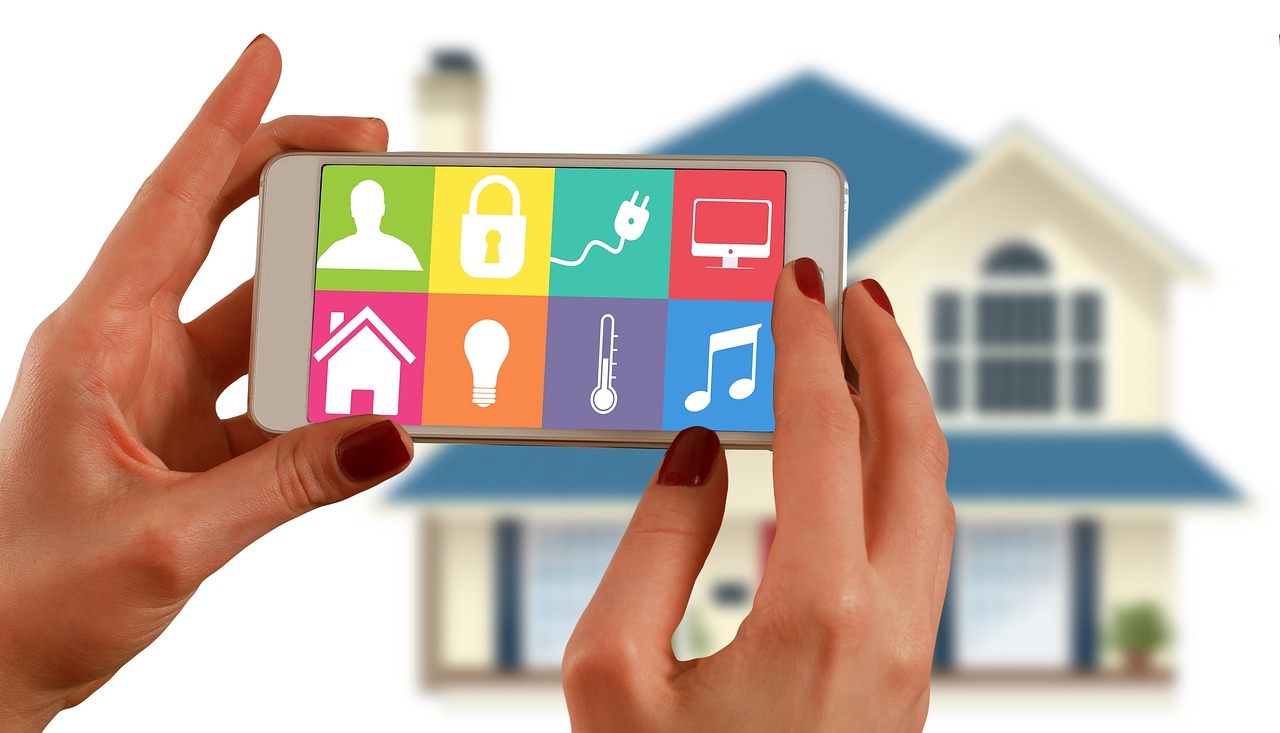
Solar Energy Management
When it comes to , the goal is all about maximizing efficiency and minimizing waste. Homeowners who invest in solar panels are not just making a choice for their bills; they're making a commitment to the environment. But how do they ensure they’re getting the most out of their solar energy systems? It’s all about the technology and strategies employed to optimize energy use. Solar energy management systems (SEMS) play a pivotal role in this process, allowing users to track, control, and optimize their solar energy production and consumption.
One of the most exciting aspects of solar energy management is the ability to monitor energy production in real-time. Imagine looking at your smartphone and seeing exactly how much energy your solar panels are generating at that very moment. This real-time data allows homeowners to adjust their energy usage according to solar output. For instance, if you notice that your solar panels are producing a significant amount of energy during the day, you might choose to run high-energy appliances, like your washing machine or dishwasher, while the sun is shining. This not only ensures that you’re using clean energy but also helps in reducing reliance on grid power.
Moreover, solar energy management systems often come equipped with predictive analytics. This means they can forecast energy production based on weather patterns and historical data. For example, if a cloudy week is on the horizon, your system can suggest adjustments to your energy usage, ensuring that you’re not caught off guard. This feature is particularly beneficial for those who rely heavily on solar energy, as it allows for better planning and energy conservation.
Another crucial component of solar energy management is the integration with battery storage solutions. Homeowners can store excess energy generated during peak sunlight hours for use during the night or cloudy days. This not only maximizes the use of renewable energy but also provides a safety net during power outages. In fact, many modern solar energy systems are designed to automatically switch to battery power when grid electricity is unavailable, ensuring that your home remains powered up.
To give you a clearer picture, here’s a simple breakdown of how solar energy management systems work:
| Component | Function |
|---|---|
| Solar Panels | Convert sunlight into electricity. |
| Inverter | Transforms solar energy into usable power for your home. |
| Battery Storage | Stores excess energy for later use. |
| Monitoring System | Tracks energy production and consumption in real-time. |
In conclusion, effective solar energy management is not just about installing solar panels; it’s about creating a smart energy ecosystem that allows homeowners to harness the full potential of renewable energy. By utilizing advanced technology, homeowners can ensure they are not only saving money but also contributing to a more sustainable future. So, if you’re considering going solar, remember that the right management system can make all the difference in your energy efficiency journey!
- What is solar energy management?
Solar energy management involves optimizing the production, storage, and consumption of solar energy to ensure maximum efficiency and minimal waste. - How does a solar energy management system work?
It tracks real-time energy production, forecasts future output, and helps manage energy usage, often integrating with battery storage solutions. - Can I use solar energy at night?
Yes, if you have a battery storage system, you can store excess energy produced during the day for use at night. - Is solar energy management worth it?
Absolutely! It can lead to significant savings on energy bills and contribute to a more sustainable lifestyle.
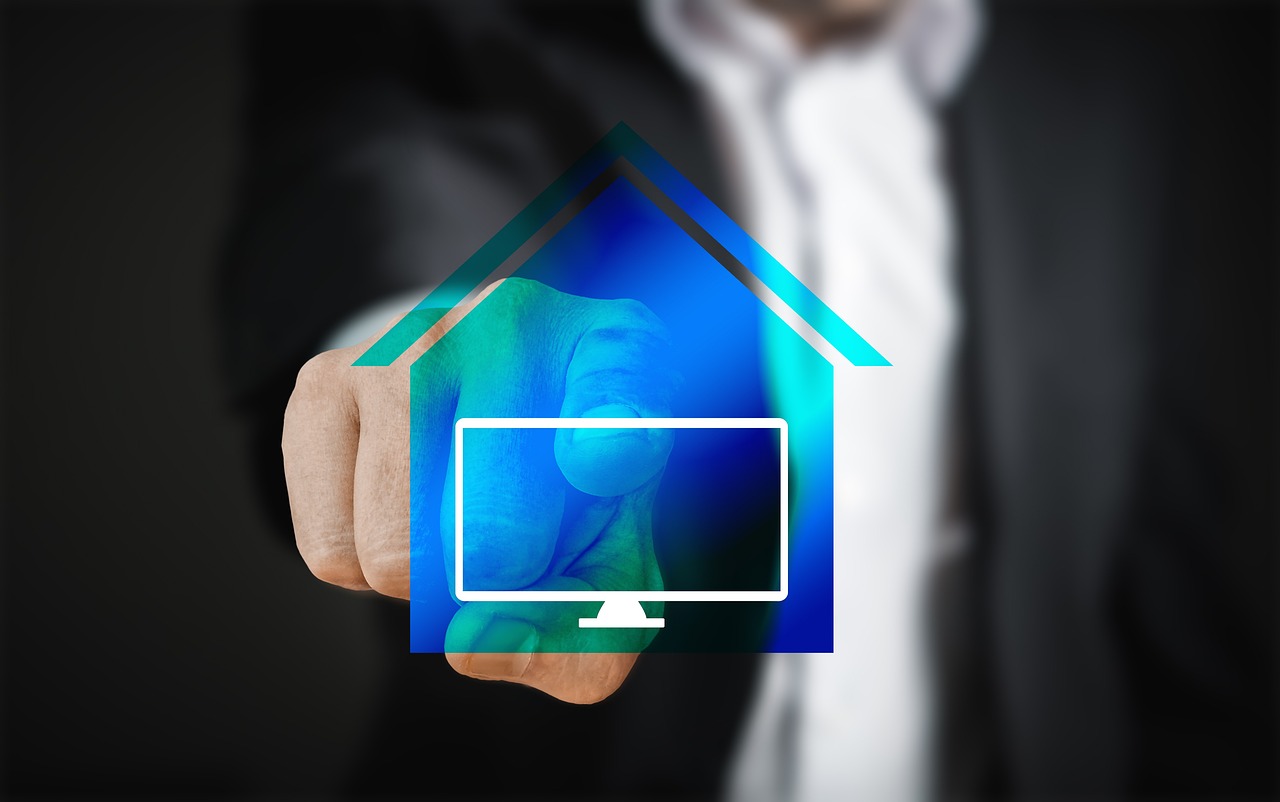
Battery Storage Solutions
Battery storage solutions are revolutionizing the way we think about energy consumption and conservation in smart homes. Imagine a world where you can harness the power of the sun during the day and use that energy to power your home at night. This is not just a dream; it's a reality for many homeowners thanks to advancements in battery storage technology. These systems store excess energy generated from renewable sources, such as solar panels, allowing homeowners to tap into this energy during peak demand periods when electricity rates are often at their highest.
One of the most significant benefits of battery storage solutions is their ability to enhance energy independence. Homeowners can reduce their reliance on the grid, especially during times of high demand or outages. By storing energy, they can ensure a continuous power supply, which is particularly beneficial during emergencies or natural disasters. Moreover, these systems can help stabilize energy costs by allowing users to avoid purchasing electricity at peak rates.
When considering battery storage solutions, it’s essential to understand the different types available on the market. Here’s a brief overview of some popular options:
| Battery Type | Capacity (kWh) | Typical Lifespan (Years) | Advantages |
|---|---|---|---|
| Lithium-ion | 5-15 | 10-15 | High efficiency, lightweight, and compact |
| Lead-acid | 2-10 | 3-5 | Lower cost, widely available |
| Flow batteries | 10-100+ | 10-20 | Long lifespan, scalable capacity |
Each type of battery has its pros and cons, and the best choice depends on individual energy needs and budget. For instance, while lithium-ion batteries are more efficient and compact, they come at a higher price point compared to traditional lead-acid batteries. On the other hand, flow batteries offer scalability and longevity but may not be as commonly available.
In addition to choosing the right battery type, homeowners should also consider the integration of these systems with their existing solar energy setups. A well-designed solar energy management system can optimize the use of stored energy, ensuring that homeowners get the most out of their renewable energy investments. This integration not only maximizes energy efficiency but also contributes to a more sustainable living environment.
In conclusion, battery storage solutions are an essential component of smart home technology, providing homeowners with the tools they need to manage their energy consumption effectively. By investing in these systems, individuals can enjoy greater energy independence, reduce their utility bills, and contribute to a more sustainable future. The world of smart homes is evolving rapidly, and battery storage is at the forefront of this exciting transformation.
- What is a battery storage solution?
A battery storage solution is a system that stores excess energy generated from renewable sources, allowing homeowners to use it later, particularly during peak demand times.
- How do battery storage systems work?
Battery storage systems charge when excess energy is available and discharge when energy is needed, helping to balance energy consumption and reduce costs.
- Are battery storage solutions worth the investment?
Yes, they can lead to significant savings on energy bills, provide backup power during outages, and promote energy independence.
- What types of batteries are available for home storage?
The most common types are lithium-ion, lead-acid, and flow batteries, each with its unique advantages and disadvantages.
Frequently Asked Questions
- What are smart homes?
Smart homes are residences equipped with technology that allows for the remote management and monitoring of various systems and devices. This can include everything from lighting and heating to security and entertainment, all designed to enhance comfort and improve energy efficiency.
- How do smart homes contribute to energy conservation?
Smart homes contribute to energy conservation by using advanced technology to optimize energy usage. For example, smart thermostats can learn your habits and adjust heating and cooling accordingly, while smart lighting can automatically adjust based on occupancy and natural light levels, significantly reducing unnecessary energy consumption.
- What are energy-efficient appliances?
Energy-efficient appliances are devices designed to use less energy while maintaining performance. In a smart home, these appliances often feature smart technology that allows them to operate more efficiently, such as washing machines that adjust water levels based on load size or refrigerators that optimize cooling based on usage patterns.
- How do smart thermostats work?
Smart thermostats work by learning your temperature preferences and daily routines. They can automatically adjust heating and cooling settings to ensure comfort while minimizing energy waste. Many models also offer remote access, allowing you to control your home's temperature from anywhere using a smartphone app.
- What is a home energy management system (HEMS)?
A home energy management system (HEMS) integrates various smart devices in your home to monitor and manage energy consumption in real-time. It provides insights into energy usage patterns, helping homeowners make informed decisions about their energy consumption and identify areas for improvement.
- Can smart homes integrate renewable energy sources?
Yes, smart homes can seamlessly integrate renewable energy sources like solar panels. This integration allows homeowners to optimize their energy usage, store excess energy, and reduce reliance on traditional energy sources, contributing to a more sustainable energy future.
- What are battery storage solutions in smart homes?
Battery storage solutions in smart homes allow homeowners to store excess energy generated from renewable sources, such as solar panels. This stored energy can be used during peak demand periods or when renewable sources are not generating energy, enhancing energy conservation and efficiency.


